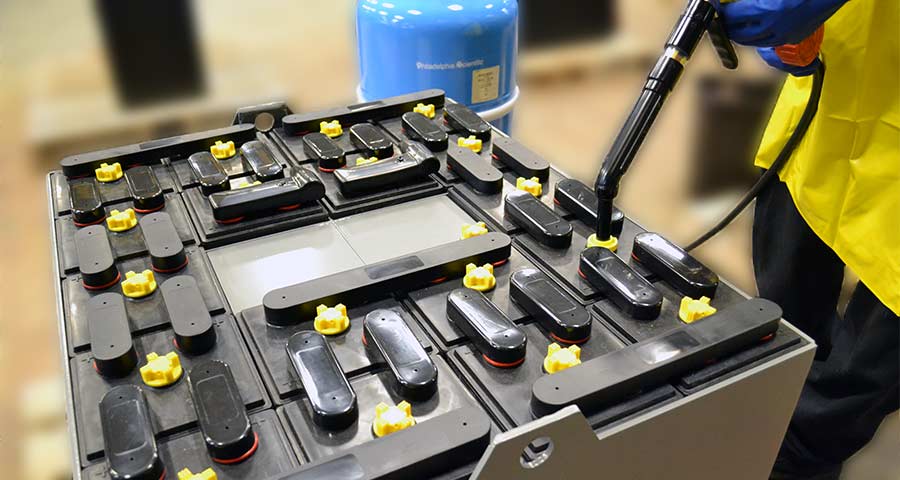Battery watering is essential to prolonging the life of your forklift battery. Proper watering helps prevent premature battery failure and costly battery replacement.
However, in many cases, companies are not properly watering their forklift batteries. When they aren’t filled over periods of time, it can lead to plates drying out and a higher concentration of acid in the remaining electrolyte.
To help optimize the investment you make in your batteries, I answer some of the most common questions about proper battery watering techniques in this blog post.
When should I water my battery?
Batteries should be watered after a full charge/equalize charge. This is when the water level in the battery is at its highest level and should then be topped off.
Watering at the wrong time can lead to serious problems. If watering is performed when the battery is in a partial state of charge or discharged, acid level comes up and it will boil over when charging. Electrolyte levels rise when charged, and filling after the charge helps prevent the overflows that cause acid-related damage and overheating.
What kind of water should I use in my battery?
Quality of water supply and water pressure are critical to a maintaining the health of your battery. Deionized water is recommended unless water has been tested and meets standards; however, some water sources may meet the standards for purity.
There are devices you can purchase to test the quality of your water. If your water contains over 100 parts per million of non-disolvable material, it’s recommended that you use de-ionized water. City and well water contain minerals and contaminants that should not be in the battery because they can damage it and cause malfunctioning of water systems.
If the water pressure is not correct and a single point watering system is being used, the valves do not operate properly resulting in over or under filled cells.
What can I do to ensure my forklift batteries are properly watered?
- Assign battery watering to one person in your organization or per shift. This eliminates any confusion about who or when the battery was watered.
- Some single point watering system companies offer mobile phone apps to help track watering.
- Although they’re not foolproof, watering monitors take the guess work out of when to fill a battery. They send a warning when batteries need watering, keeping them in ready condition and eliminating the need for unnecessary checking. Battery Watering Monitors
- Even if you have a watering system, it’s still necessary to manually inspect the system to ensure that it’s working properly.
- In small operations, a simple battery maintenance checklist can be used.
- Always follow the proper maintenance guidelines included in your forklift battery operations manual.
Conclusion
Make sure watering is a featured part of your battery maintenance program and enjoy the benefits of a healthy forklift battery!
– Mark Matula, Service Technician

